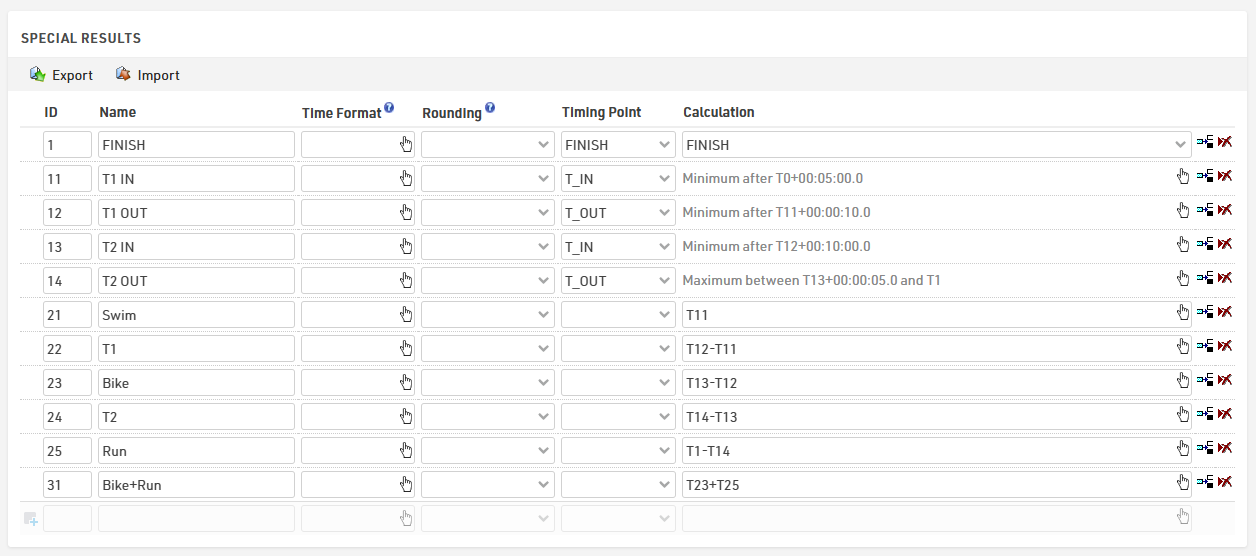When selecting Advanced, a popup window appears where custom raw data rules can be defined, the rule basically defines how a raw data detection wil be selected.

You can either enter one rule for <All Contests> or different rules per contest, and specify whether the raw data detection needs to be after and/or before another result (plus a time offset), you have endless flexibilty to define rules.
Minimum / Maximum
This rule takes either the earliest, or latest time according to the criteria you set. These can be applied from any reference point not just T0, for example a check-in may require the Maximum time before T0 to know who has started the race.
This is a triathlon example:

Note that each result refers to the previous result. For example, the T1 OUT time needs to be at least 10 seconds after T1 IN:

This way, all typical problems can be handled automatically: In the example of a triathlon these could be people standing on the entrance to the transition zone and creating several reads, people leaving the transition at the wrong exit, people coming back into transition because they forgot something, etc.
Nth / Lap
These work in a similar way to the Lap Race Rules, and also use the Minimum Lap Time for each Contest, although for N=1 this is not used.
Nth Read is equivalent to Read X After T0 + MinLapTime but with respect to the value defined for After instead of T0.
Lap N gives the associated Lap Time, Lap 1 will however always be from T0.
For both you can define a minimum time after which the reads are valid, the value for After should be identical for all values of N.
These rules could be used for a stage race where a later stage is a multi-lap criterium, where otherwise you would have to use a minimum time with an offset for each lap.
Highest RSSI
Primarily intended for use with Active Trackpings using the Track Box Active, this rule will look for the raw data record with the highest RSSI (signal strength) to calculate the time.
When using Track Boxes it is possible to detect a participant for a much longer period of time as they approach and leave the range of the Track Box, the highest signal strength is most likely to occur when closest to the box, and so this rule allows a more accurate time to be recorded for the passing.
It is advised to include values for both After and Before when working with this rule, especially if expecting multiple detections from each device. When doing so it is important to avoid creating a circular reference.